
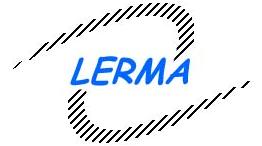





 Ecole
Internationale Daniel Chalonge
Ecole
Internationale Daniel Chalonge 







 Ecole
Internationale Daniel Chalonge
Ecole
Internationale Daniel Chalonge 
Chalonge Meudon Workshop 2015
Warm Dark Matter in Agreement with Observations:
CMB, Galaxies, Black Holes, and Sterile Neutrinos
CIAS Observatoire de Paris, Château de Meudon, Meudon campus
10, 11 and 12 June 2015
In the honor of Hector J.de Vega, the scientist and human person

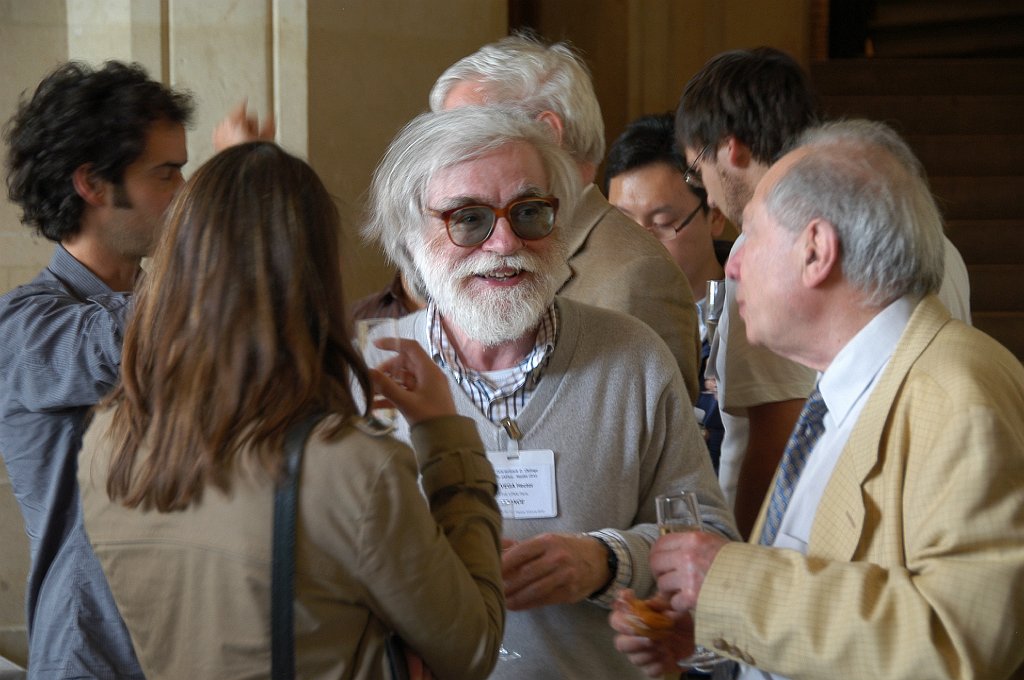

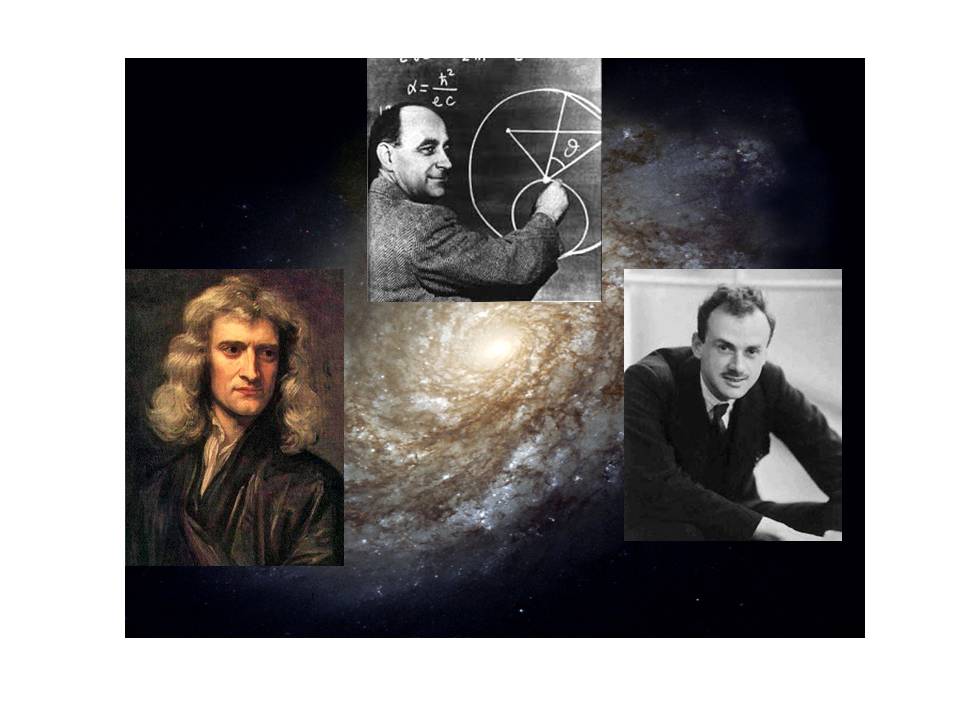
Newton, Fermi and Dirac meet together in galaxies through Warm Dark Matter (keV)


REGISTRATION
IS CLOSED
1.
Summary:
Warm Dark Matter (WDM) is hot topic in galaxies cosmology and implies novelties in the astrophysical, cosmologicalparticle and nuclear physics context.Warm Dark Matter Cosmology (LWDM) gives the same successfull large scale results and CMB results than Cold Dark Matter (LCDM) and succesfully agrees with the observations at the galactic and small scales.
A Turning Point operated recently in the Dark Matter research: Warm Dark
Matter (WDM) emerged
impressively over Cold Dark Matter (CDM) as the leading Dark Matter candidate. WDM solves naturally the problems of CDM
and CDM + baryons. LWDM provides the same large scale and CMB results than LCDM and agrees with the observations at the galactic and small scales. Warm Dark Matter (WDM) implies progresses in the astrophysical,cosmological, particle and nuclear physics context.
This workshop addresses the last developpements in WDM, including its distribution function and equation of state, the quantum mechanical framework to galaxy structure
reproducing in particular the observed galaxy cores and their sizes and the dwarf galaxies. This workshop puts together astrophysical, cosmological,
particle and nuclear WDM, astronomical observations, theory and WDM analytical and numerical frameworks
which reproduce the observations. The Workshop addresses
as well the theorical and experimental search for the leading WDM particle candidate: keV sterile neutrinos.
2.
The New Dark Matter Situation Today: Warm
Dark Matter (WDM) research is progressing fast, the subject is new
and WDM essentially works, naturally reproducing the astronomical
observations over all scales: small (galactic) and large
(cosmological) scales (LambdaWDM). Astronomical evidence that Cold
Dark Matter (LambdaCDM) and its proposed tailored baryonic cures do not work
at small scales is staggering.
A. The fermionic quantum pressure of WDM ensures
the observed small scale structures as the cores of galaxies and their right sizes
(including the dwarf galaxies).
N-body simulations in classical (non-quantum) physics do not take into account
the fermionic quantum pressure of WDM and produce unreliable results at small scales:
That is reason of the too small core size problem in classical (non-quantum) N body WDM
simulations and its similar dwarf galaxies problem.
B. Two observed quantities crucially constrain the DM nature in an inescapable way independently of the
particle physics model: the average DM density rho and the phase space density Q.
The observed values of rho and Q in galaxies today robustly point to a keV scale DM particle
(WDM) and exclude CDM as well as axion Bose-Einstein condensate DM.
C. Lyman alpha bounds on the WDM particle mass apply only to specific sterile neutrino models
and many sterile neutrino models are available today for which the Lyman alpha bounds
are unknown. Therefore, WDM cannot be disfavoured in general on the grounds of the Lyman alpha bounds only valid
for specific models, as erroneously stated and propagated in the literature.
Astrophysical constraints put the sterile neutrino mass m in the range 1< m <10 keV.
For a thermal relic most of the constraints and last results points to m about 2 keV or nearly larger.
For a dark matter aprticle decoupling at thermal equilibrium (thermal relic), all evidences point out a 2 KeV particle.
Remarkably enough, sterile neutrinos decouple out of thermal equilibrium with a primordial power spectrum similar to a 2
keV thermal relic when the sterile neutrino mass is about 7 keV, and therefore, WDM can be formed by 7 keV sterile neutrinos.
MARE, KATRIN, ECHO and PTOLEMY experiments could detect such a keV sterile neutrino.
It will be a fantastic discovery to detect dark matter in a beta decay or in electron capture.
A exciting WDM work to perform is ahead of us.
3.
History, Context, the CDM and WIMP crisis and their decline:
This Workshop is the
Sixth of a new Chalonge series in Meudon dedicated to Warm Dark Matter.
The first Workshop of this series (June 2010) allowed to identify and
understand the issues of the serious problems faced by Cold Dark
Matter (CDM) and CDM + baryons to reproduce the galactic
observations. The 2010 and 2011 Workshops served as well to verify
and better understand the confusion situation in the CDM research, namely the
increasing number of cyclic arguments, and ad-hoc mechanisms
and recipes introduced in the CDM + baryon galaxy simulations over most of twenty five years, in
trying to deal with the CDM + baryons small scale crisis: Cusped profiles and
overabundance of substructures (too many satellites) are predicted by CDM.
In contrast, cored profiles and no such overabundant substructures are seen by astronomical observations.
The so many galaxy formation and evolution models of CDM + baryons are plagued with ever increasing tailoring or fine tuning
and recepes.
On the CDM
particle physics side, the situation is no less critical: So far, all
the dedicated experimental searches after most of twenty five years to
find the theoretically proposed CDM particle candidate (WIMP) have repeatedly
failed. The CDM indirect searches (invoking CDM annihilation) to
explain cosmic ray positron excesses, are in crisis as well, as wimp
annihilation models are plagued with growing tailoring or fine
tuning, and in any case, such cosmic rays excesses are well explained
and reproduced by natural astrophysical process and sources. The
so-called and continously invoked 'wimp miracle' is nothing but
being able to solve one equation with three unknowns (mass, decoupling
temperature, and annihilation cross section) within wimp models
theoretically motivated by SUSY model building twenty five years ago (at
that time those models were fashionable and believed for many
proposals which is not anymore the case).
After more
than twenty five years, and as often in big-sized science, CDM research
(CDM+ baryon simulations, direct and indirect WIMP experimental research and model building),
has by now its own internal inertia and own organized community, without reproducing the
astronomical observations and failing to provide any experimental signal of
wimps (except signals compatible with experimental noise).
Growing CDM + baryon galaxy simulations involve ever increasing large super-computers
and large number of people working with; CDM particle wimp search involved (and involve)
large and long-time planned experiments, huge number of people and huge budgets.
One should not to be surprised then if a strategic scientific change have not yet
operated in the CDM + baryon research and in the wimp research,
given the way in which the organization operates, although their real scientific situation is of decline.
Wimps are not the DM particle, DM is not Cold because the right DM particle is at the keV scale, DM is Warm.
4. This Workshop addresses the last and fast progresses made in Warm Dark Matter Galaxies in Agreement with Observations. In the tradition of the Chalonge School, an effort of clarification and synthesis will be made by combining in a conceptual framework, theory, analytical, observational and numerical simulation results. The subject will be approached in a threefold way:
(I) Conceptual context: Dark Matter in cosmology and astrophysics: perspective and prospective of the research in the subject: Theory and observations. The emergence of Warm (keV scale) Dark Matter from theory and observations.
(II) Astronomical observations : galaxy structural properties, the universal and non universal properties of galaxies, high quality rotation curves, kinematics, density profiles, gravitational lensing, small and large structures, deep surveys, clusters of galaxies
(III) Computational framework with the equations of physics. Analytical and numerical frameworks. The new important physical ingredient in galaxy structure: quantum mechanics. Classical (non quantum) numerical simulations with Warm Dark Matter and resulting structures. Results versus observations.
Special attention will be payed to the astrophysical understanding of the dark matter problems and its solution, the use of analytic and numerical methods which determine the properties, the density profiles, masses, sizes and evolution, the distribution and the nature of Warm Dark Matter.
____________________________________________________
FORMAT OF THE WORKSHOP
All Lectures are followed by a discussion. All participants are invited to take part in the discussions.Enough time will be available for the discussions.
The Meeting is open to all scientists interested in the subject. Registration is mandatory. Registration information is given below.
The format of the Meeting is intended to allow easy and fruitful mutual contact and communication.
Sessions last for three full days in the beautiful and green Meudon campus of Observatoire de Paris in the historic Castle with the Great Dome building ("Château Grande Coupole") where CIAS (Centre International d´ Ateliers Scientifiques) is located.
All lectures and presentations will take place at the Castle Conference Room (Salle de Conferences du Château) in the historic Castle building.
All Coffee-Tea breaks will take place at the Urania Hall aside the castle conference room in the same building. The Registration desk and the Secretariat of the Workshop take place at the Urania Hall.
Discussions and working sessions all during the workshop will take place at the CIAS rooms aside the Urania Hall.
SOC et LOC :
Norma G.Sanchez, Hector J. de Vega, Peter Biermann, Maria Cristina Falvella
Nicole Letourneur, Dominique Lopes, Sylvain Cnudde, Emmanuel Vergnaud, Djilali Zidani
Informations on the previous Meudon Chalonge Workshops and of the school programmes are available at https://chalonge-devega.fr (lecturers, lists of participants, lecture pdf files, Highlights and Conclusions, and photos during the Colloquia Workshops).
PROGRAMME and LECTURERS
Peter
BIERMANN (MPI-Bonn, Germany & Univ of Alabama, Tuscaloosa, USA)
Warm Dark Matter and its astrophysical signatures.
Dietrich
BODEKER (Fakultaet fuer Physik, Universitaet Bielefeld, Germany)
Non-relativistic Leptogenesis and heavy neutrinos
Daniel
BOYANOVSKY (Univ. of Pittsburg, Dept of Physics and Astronomy, USA)
Cosmological implications of light sterile neutrinos produced after the QCD phase transition
Hector
J. DE VEGA (CNRS LPTHE Univ de Paris VI, France)
The Structure of Galaxies in keV Fermionic Warm Dark Matter : Classical and Quantum regimles
Anastasia
FIALKOV(Départment de Physique ENS Paris France)
Signatures and constraints on Warm Dark Matter scenarios from reionization, 21-cm, first galaxies
Loredana
GASTALDO & Clemens HASSEL (Kirchhoff Institute for Physics KIP, Univ Heidelberg, Germany) Hareth
MAHDI (Sydney Institute for Astronomy, University of Sydney, Australia) Shunsaku
HORIUCHI (Dept. of Physics & Astronomy, Univ. of California, Irvine, CA, USA) Thierry
LASSERRE (CEA, IRFU-Saclay, France) Marco
LOMBARDI (Dept. of Physics,University of Milano, taly) Maxim
MARKEVITCH (NASA/Goddard Space Flight Center, Greenbelt, MD, USA) Nicola
MENCI (INAF, Osservatorio di Roma, Roma, Italy) Susanne
MERTENS (Inst. for Nuclear & Particle Astrophysics, LBNL Berkley, CA, USA) Sinziana
PADUROIU (Observatoire de Geneve, Switzerland) Manolis
PAPASTERGIS (Kapteyn Institute, Univ of Groningen, Netherlands) Brigitte
ROCCA-VOLMERANGE (Univ Paris-Sud & IAP, Paris, France) Paolo
SALUCCI (SISSA-Astrophysics, Trieste, Italy) Norma
G. SANCHEZ (CNRS LERMA Observatoire de Paris, Paris, France) And Other LECTURERS
-------------------------------------------------------------------------
Local and practical information can be found below.
REGISTRATION
The Meeting is open to all scientists interested in the
subject but Registration is mandatory.
Certificates
of participation will be delivered by the Secretariat
during the Workshop upon request.
Participants
wishing to attend the Meeting should register in time, by
on line registration (on the top of this page)and in any case
BEFORE
15 MAY 2015
An automatic mail is sent to you after your on
line registration.
The
LIST of Registered confirmed Participants will be posted in May.
BADGES for all registered confirmed participants in the list will be
available at the Registration desk from Wednesday 10 June at 8:10 am.
Please wear your badge all during the Workshop, which
will make easy your access and circulation within the Paris
Observatory Meudon campus.
Contact: Workshop
Secretariat: Nicole.Letourneur at obspm.fr We
look forward to seeing you in Meudon for a creative, fruitful
and enjoying meeting. Participants
should make their reservations by their own. A list of hotels in
Paris nearby Montparnasse station is provided below.
TIMING
AND LOCATION
Welcome
of the participants and Registration starts on wednesday 10 June at
8:00 am at the Urania Hall in the historic Meudon Castle
("Château de Meudon"). Tickets for lunch will be on
sale at the registration desk from Tuesday morning. Lectures
start on Wednesday 10 JUNE at 8:00 am in the Castle ("Chateau")
CIAS building .
We shall strictly stick
to the timetable during the whole meeting.
All lectures and events will
start at the indicated times sharp.
All sessions take place in the historic Castle
("Château" building) where CIAS is located , All
COFFEE-TEA-MATE-CHAMPAGNE BREAKS take place in the Urania Hall
in the CIAS Château building. LUNCH
is served at the Self-service Restaurant of Observatoire de Paris
at Meudon (located very near from the "Château" building,
inside the Meudon campus, around the pond). The
PHOTO of the group will be taken in the middle of one of the
main entries of the "Chateau".
The
COCKTAIL/RECEPTION for all participants and accompanying
persons will be offered on FRIDAY 12 JUNE in the late afternoon at
the terrasse (if weather allows it) aside Urania Hall; otherwise,
inside the Castle. Please
Notice: The Workshop ends after the COCKTAIL/RECEPTION in
the late afternoon of Friday 12 June. All participants and lecturers
are expected to stay untill the end of the Meeting. LOCATION
: The entrance of the
Observatoire de Paris at Meudon is 5, Place Jules Janssen, F-92 190
Meudon (see below how to reach Meudon).
Lunch
is served at the Self-service Restaurant of Observatoire at Meudon
(located very near from CIAS Castle, inside the Meudon campus, around
the pond). The tickets for lunch will be available at the Conference
registration desk from Thursday morning.
On Friday, there will be a Cocktail/Reception in the the
late afternoon in the Urania Hall/terrasse.
The Observatoire Self-Service Restaurant is closed for dinner and on Saturdays /Sundays.
HOW
TO REACH MEUDON OBSERVATORY
Address
:
5, Place Jules Janssen, F-92 190 Meudon .Tel: 01.45.07.75.30 .Fax:
01.45.07.74.69 Meudon
Observatory is located Place Jules Janssen , in Meudon at the top of
the Avenue du Château. By train. The
best way for visitors to reach Meudon Observatory is from
Paris-Montparnasse train station and to stop at Bellevue station
(recommended stop). The travel duration by train from Paris
Montparnasse to Bellevue station is about 12 minutes. Recommended
way is the following:
By
train (French railways - SNCF):
At Paris-Montparnasse station, take the train going to Sèvres
or to Versailles-Chantiers, Rambouillet, Chartres, (which frequency
is every 15 min.). Make sure that the train stops at the Meudon or
Bellevue stations. Get out at the 4th station: Bellevue (after
Vanves-Malakoff, Clamart and Meudon stations).
Once outside
Bellevue station, turn left (passing the church aside the station)
and take the green Avenue du Château bordered by trees: the
entrance of the Observatory is on the top of the hill. About a 10/15
minutes walk to reach the gates of the Observatory. [There is also a
mini bus (circular local line) from the Bellevue station to the
Observatory]. If you stop at
the Meudon station: outside the station, turn to the right, after 200
m turn again to the right to take avenue Corbeiller [where the
Meudon Municipality is located (Mairie de Meudon), ahead up to the
top of the hill along avenue Corbeiller, rue Jacqueminot lined with
stately chestnut trees. Once arrived,
use the map of the Observatory campus: Chateau Grande Coupole CIAS
where the meeting takes place, (building 9 in the map) is on the
terrasse (take the staircase in the garden at the left after the
entry and then at the left straight on the road along the terrasse
bordered by the chestnut trees. By
car there are 2 possible routes :
Take the périphérique, exit at Quai d Issy, then go
towards Issy les Moulineaux, Sèvres and finally Meudon Take N
118, from the Pont de Sèvres, going towards Chartres Orléans,
exiting at Meudon Sèvres and then going towards Meudon. HOTELS
IN PARIS MONTPARNASSE
Hôtel
du Maine;
16 Rue Maison Dieu, Paris, 75014 Hôtel
Ibis; 71
boulevard de Vaugirard, Paris, 75015 Hôtel
Montparnasse-Daguerre;
94 rue Daguerre, Paris, 75014 Hôtel
Campanile - Maine Montparnasse;
146 Avenue du Maine, Paris, 75014 Hotel
l'Aiglon, 232 boulevard Raspail, metro Raspail, tel. 33 (0)
143208242,
Hotel
Delambre 35 rue Delambre, metro Edgar Quinet, tel. 33 (0) 145389176,
delambre@club-internet.fr Hotel
de la Paix, 225 boulevard Raspail, metro Raspail,tel. 33 (0)
143353263, rela@hoteldelapaix.com Mercure
Raspail Montparnasse, 207 bd Raspail, Paris 75014 .Tel.33 (0).
14320-6294, fax 33(0).14327-3969.
Tel. 33(0)1-4313-1700. Fax 33(0)1-4581-6391.
SOME
RESTAURANTS IN PARIS MONTPARNASSE La
Closerie des Lilas, 171, boulevard Montparnasse. Tel.
014051-3450.Open everyday till 1 am. Formerly
a Café littéraire had as customers Baudelaire,
Verlaine, Gide, Jarry, Apollinaire, Modigliani, Hemingway, Lenin and
probably Trotsky. Keeps a litterary crowd of customers like Philippe
Sollers. The present chef Jean-Pierre Cassagne has renovated the
house and the excellent meals. Besides the restaurant there is
`brasserie' where meals are alsoserved. Menu 43 euros
(including wine), à la carte 90 euros. La
Rotonde Montparnasse, 105 bd. Montparnasse,
Tel. 0143266884. Open every day from 12 am till 1pm.
www.rotondemontparnasse.com
Typical parisian restaurant since 1911. Seafood, oysters,
famous Salers entrecote, good fish, selected Auvergne cheese and good
desserts. Landmark of the Montparnasse district had as regular
customers artists, musicians, writers and politicians: Modigliani,
Picasso, Soutine, Cocteau, Diaghilev, Debussy, Nijinski, Stravinsky,
Man Ray (and Kiki), Breton, Aragon, Prevert, Queneau, Hemingway,
Gershwin, Henry Miller, Scott Fitzgerald. Meetings of Trotsky with
fellow bolcheviks in the first floor room to organize the 1917
russian revolution were often interrupted by the french police. Menus
35 and 43 euros. La
Coupole, 102 bd. Montparnasse, Tel.
0143201420. Open every day from 12 am till 1 pm. Typical
Art Deco parisian restaurant open in 1927. Seafood, salmon rilletes,
abundant sauerkraut, fresh codfish a la plancha, entrecote with
french frites, lamb curry india style, excellent desserts. Among
regular customers in the past: Cocteau, Prevert, Sartre, Beauvoir,
Picasso (who met here Dora Maar), Matisse, Piaf, Montand. -------------------------------------------------------------------------- THE
PARIS OBSERVATORY AT MEUDON : A BRIEF HISTORY At
present the Observatoire de Paris owns three campuses: Paris, Meudon
and the radioastronomy station at Nançay. More than 700
scientists, technicians and administrative staff work there. The
history of the present Meudon Castle (Château de Meudon) starts
several centuries ago.
The
new Château de Meudon over where the cupola of the Meudon
Observatory is installed was built in 1706 by the great architect
Jules-Hardouin Mansart in orders by King Louis XIV for his son the
Grand Dauphin. This was the last important project realized by
Mansart. The gardens and water fontaines were constructed under the
plans by Le Nôtre. Important visitors stayed in the Château
de Meudon in the XVIII century as the Zar of Russia Peter the Great
and the King of Poland Stanislas Leszczyski.
After the French Revolution, a
workshop to construct military balloons was settled in the area.
These balloons played an important rôle in the Fleurus battle
against Austria in 1794. Napoleon restaured the Château de
Meudon and the Empress Marie-Louise and their son (the King of Rome)
lived in the Castle. The
terrasse was used by the prussians to shell Paris during the siege of
1870. The Château
de Meudon took fire at that time.
In
1876 the astronomer Jules Janssen created the Meudon Observatory and
in 1893 a refraction telescope was installed over in the Castle. ---------------------------------------------------------------------- Potager du Dauphin
15 rue de Porto-Riche, 92190 Meudon Musée
- Atelier Rodin
, Villa des Brillants Beaux-Arts. House-workshop
and garden of the artist. Original casts of the work of the great
sculptor. The Tomb of the sculptor with one his versions of the
"The Thinker". Musée
d'Art et d'Histoire de la Ville de Meudon
Beaux-Arts - Histoire Fondation
Arp à
Clamart
1.8 km (sud-est limit of the Meudon forest). House-workshop
and garden of the artists Jean Arp and Sophie Taeuber who designed
the house in 1960. Epured Cubism. Abstraction and Dadaisme. Kandinsky
"Blaue Reiter"mouvement of 1912. Max
Ernst, Tristan Tzara, Constructivist Théo Van Doesburg.
Original and asttonishing constructions in
the "Triangle des Châtaigniers" (Chestnuts Triangle)
designed by Chemetov, Déroche and Lecaron architects. ---------------------------------------------------------------------
International
School of Astrophysics 'D.Chalonge' Back
to Chalonge School Page <https://chalonge-devega.fr>
The Status of the ECHO experiment for the investigation of keV sterile neutrinos.
Gravitational Lensing in Warm Dark Matter and Evolving Dark Energy Cosmologies
keV Sterile neutrino Warm Dark Matter bounds from Galaxies of the Local Group
Sterile Neutrino experiments : A Status Report
Filaments, Surface density and Scaling laws in Star and Structure formation: Density Models fitted to Observational Data
The 3.5 keV emission line in the X-ray spectrum of galaxy clusters, results and controversies
Galaxy and Star formation in Warm Dark Matter Cosmology
keV Sterile neutrino Warm Dark Matter searches with Tritium Beta Decay experiments.
Numerical Simulations on Structure Formation in Warm Dark Matter Cosmology.
Dark matter implications from the ALFALFA 21 cm survey
The Supernova Remannent Mass accumulated along the star formation history of z=3.8 Radio Galaxies and its implications
Testing Warm Dark Matter with Galaxy observations at high redshifts
The Thomas Fermi keV Warm Dark Matter Galaxy Theory in agreement with observations: Quantum macroscopic effects and New Results
The fee is 60 Euros. The fee covers the 6 coffee-tea breaks, the tickets for the 3 lunchs and the coktail/reception.
Some selected presentations or posters on WDM from registred participants will be included in the workshop programme
EARLY
REGISTRATION IS STRONGLY ENCOURAGED

[The Lunch includes for Each Lunch at the Observatory
self-restaurant in Meudon the following six items: Entry/appetizer. Main course. French cheese or green salad. Dessert (cakes or
fruits or yoghurt). Drink (wine, beer or mineral water or other soft drinks). Coffee or Tea . For Each item a variety of choices
is proposed every day (meat, fish, chicken, vegetarian, with their garnitures). Also, one can skip one item and have instead
another item twice]
Some Restaurants are listed below.
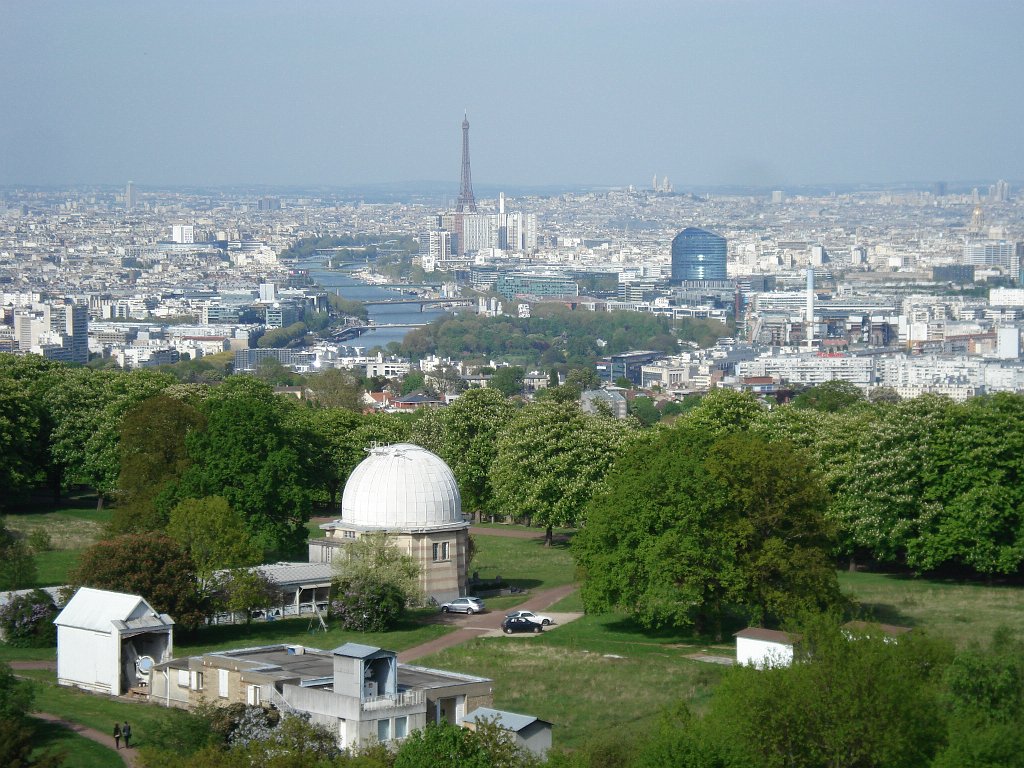
![]() Longitude
: 2° 14' East . Latitude : 48° 48' North
. Altitude : 162m
Longitude
: 2° 14' East . Latitude : 48° 48' North
. Altitude : 162m
Metro Glaciere or Saint-Jacques
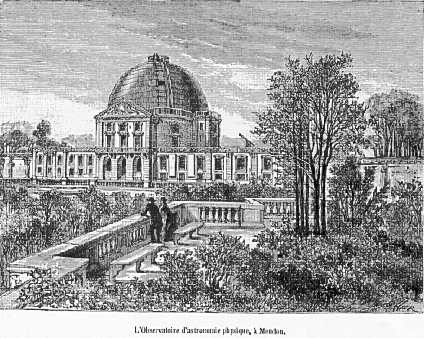
CULTURAL
EVENTS
Museums
at Meudon
Espaces culturels : 01 55 64 08 81
Parc ouvert tous les jours : de 8h à 20h (jusqu'au 30 septembre), de 8h à 18h (jusqu'au 31 mars)
--------------------------------------------------------------------------------------------------------